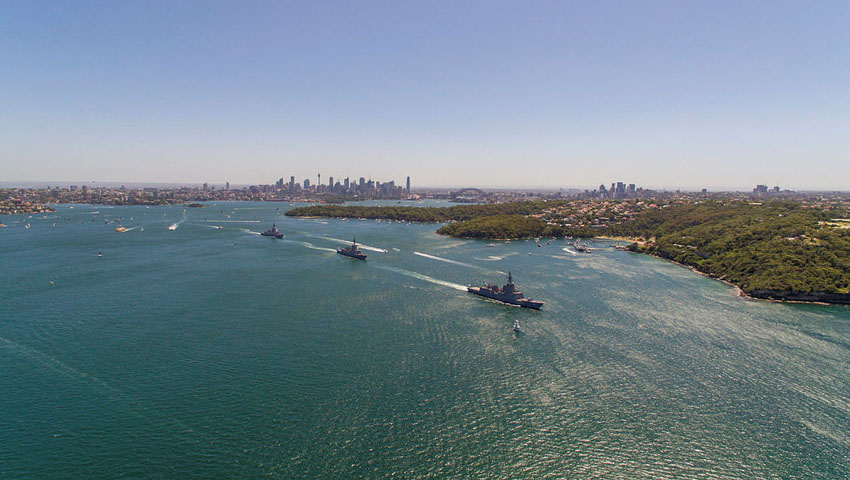The Royal Australian Navy’s three Hobart Class destroyers have exercised together for the first time, demonstrating their co-operative capabilities to increase maritime security and stability in our region.
HMA Ships Hobart, Brisbane and Sydney conducted joint tests, trials and exercises off the east coast of Australia, further developing their air and surface warfare capabilities.
Minister for Defence Linda Reynolds said the exercise demonstrates Navy’s preparedness to respond to a more complex and contested maritime domain.
“The Hobart Class are the most capable and lethal warships Australia has ever built, increasing our interoperability with the United States and allowing us to work even closer with our allies and partners,” Minister Reynolds said.
“Through this government’s record up to $183 billion Naval Shipbuilding Program we are growing our Navy to support the need for increased maritime security and stability in our region. The Hobart Class destroyers have demonstrated that they can be integrated effectively to support the mutual endeavours and commitments of the ADF and our partner nations.”
The three Hobart Class vessels will primarily provide air defence for accompanying ships, in addition to land forces and infrastructure in coastal areas.
The Hobart Class’ Spanish counterparts entered service with the Spanish Navy beginning in the early 2000s, working alongside key NATO and US maritime assets.
Minister for Defence Industry Melissa Price witnessed the joint exercise from on board HMAS Hobart.
Minister Price said the co-operative engagement capability allowed shared information and data to be integrated into the ship’s Aegis combat management system.
“Australian workers from both Raytheon Australia and Lockheed Martin Australia should be proud of their significant contribution to this remarkable capability. Today was a powerful visual milestone for Australian defence industry after a decade of work across 2,700 suppliers who have contributed to the Air Warfare Destroyer Program,” Minister Price said.
When deployed to the Persian Gulf, the Spanish F100s became the first foreign Aegis-equipped ships to fully integrate into a US Navy Carrier Strike Group, while the class has also successfully deployed as the flagship of NATO’s Maritime Group Standing Reaction Force, highlighting the individual and interoperable capabilities of Navy’s new destroyers.
The vessels will be capable across the full spectrum of joint maritime operations, from area air defence and escort duties, right through to peacetime national tasking and diplomatic missions.
Minister Price added, “I am proud to see the successes of Australia’s expansion of shipbuilding, as well as these complex systems integration skills operating at sea, demonstrating an advanced and co-ordinated warfare capability.”
The trials included Royal Australian Air Force participation, further enhancing the destroyers' combat reach and effectiveness, and opening new opportunities for the joint integrated air missile defence program.
The Hobart Class combat system is built around the Aegis weapon system. Incorporating the state-of-the-art phased array radar, AN/SPY 1D(V), will provide an advanced air defence system capable of engaging enemy aircraft and missiles at ranges in excess of 150 kilometres.
While based upon the Spanish F100s, the Australian vessels incorporate a number of modifications and Australian-specific structural/design and combat system modifications to provide a uniquely Australian surface combatant with international provenance.


